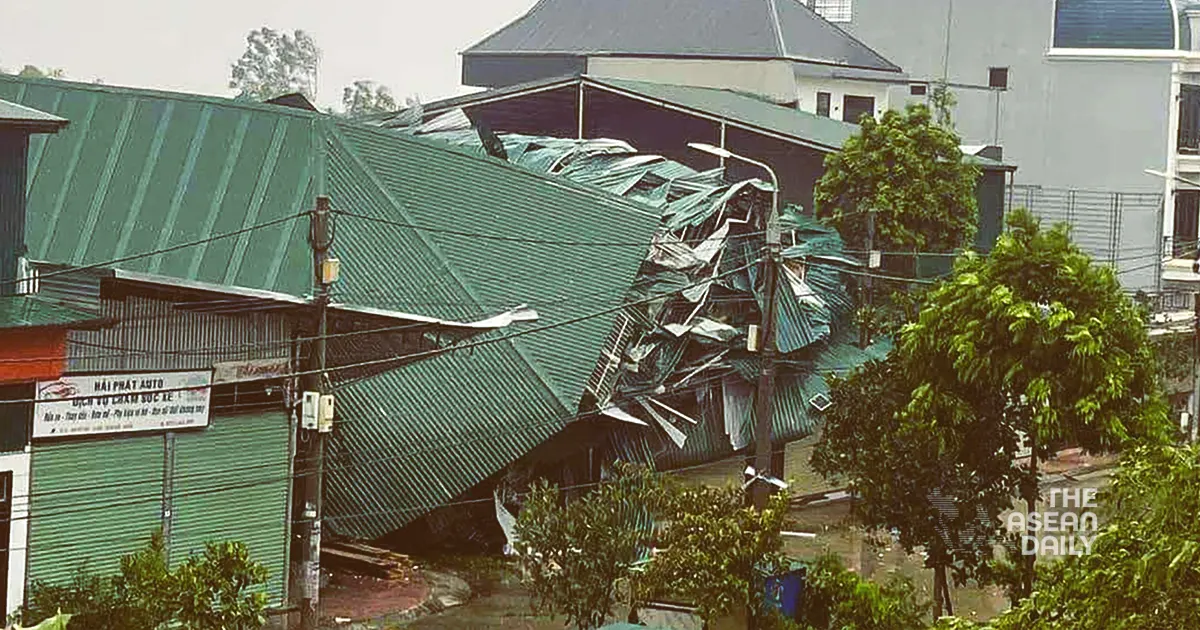7-9-2024 (HANOI) Typhoon Yagi, described by Vietnamese meteorologists as “one of the most powerful typhoons in the region over the past decade”, has left a trail of destruction in its wake after making landfall in northern Vietnam on Saturday afternoon. The devastating storm has claimed at least four lives and injured 78 others, according to Vietnamese authorities.
The typhoon, which had previously caused three deaths and injured nearly a hundred people in China’s Hainan province, struck Vietnam’s coastal provinces of Quang Ninh and Haiphong with ferocious wind speeds reaching up to 149 kilometres per hour (92 miles per hour).
In anticipation of the storm’s arrival, the Vietnamese government had issued several alerts and implemented precautionary measures. Vulnerable populations at risk of floods or landslides were evacuated, and four airports, including those in the capital Hanoi and the city of Haiphong, were closed.
The UNESCO World Heritage site of Ha Long Bay in Quang Ninh province, renowned for its striking limestone islands, saw hundreds of cruises cancelled as a safety precaution. In Haiphong, an industrial hub home to major factories including EV maker VinFast and Apple supplier Pegatron, businesses braced for impact.
The typhoon’s fury has triggered widespread power outages across large swathes of Quang Ninh and Thai Binh provinces. In Hanoi, despite efforts to prune trees to reduce the risk of falling, strong winds and rain toppled several trees and billboards. Local media reported numerous moored boats being swept out to sea by the powerful storm.

Before striking Vietnam, Typhoon Yagi had already left a path of destruction in its wake. It made landfall in the Chinese city of Wenchang in Hainan province on Friday afternoon, with wind speeds near its centre reaching a staggering 245 kph (152 mph). Chinese authorities reported that the typhoon affected over 1.2 million people, necessitating the relocation of 420,000 Hainan residents and the evacuation of another half a million people in Guangdong province.

The storm’s impact was also felt in Hong Kong, where more than 270 people sought refuge in temporary government shelters, and over 100 flights were cancelled. The typhoon disrupted daily life in the city, halting trading on the stock market, suspending bank services, and closing schools.
Yagi’s destructive journey began in the Philippines, where it was still classified as a storm when it exited the country’s northwestern region into the South China Sea on Wednesday. The storm left at least 20 people dead and 26 others missing, primarily due to landslides and widespread flooding. More than 2.3 million people in northern and central Philippine provinces were affected, with over 82,200 individuals displaced from their homes.
Climate scientists have long warned about the increasing intensity of typhoons, particularly in Southeast Asia, as a result of climate change. A UN climate change report highlighted that warming ocean waters, which power these storms, are contributing to the growing frequency and strength of intense typhoons in the region.




